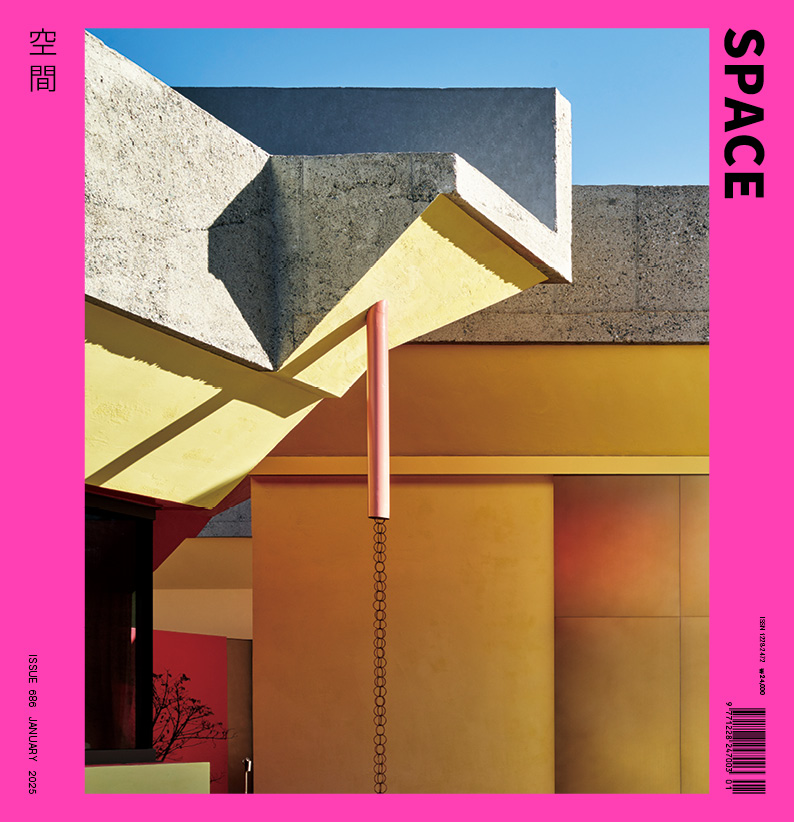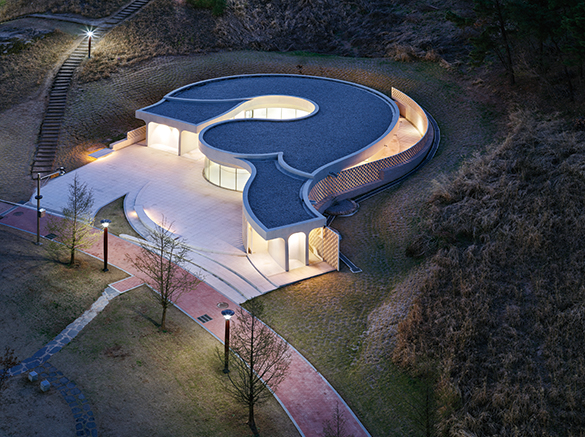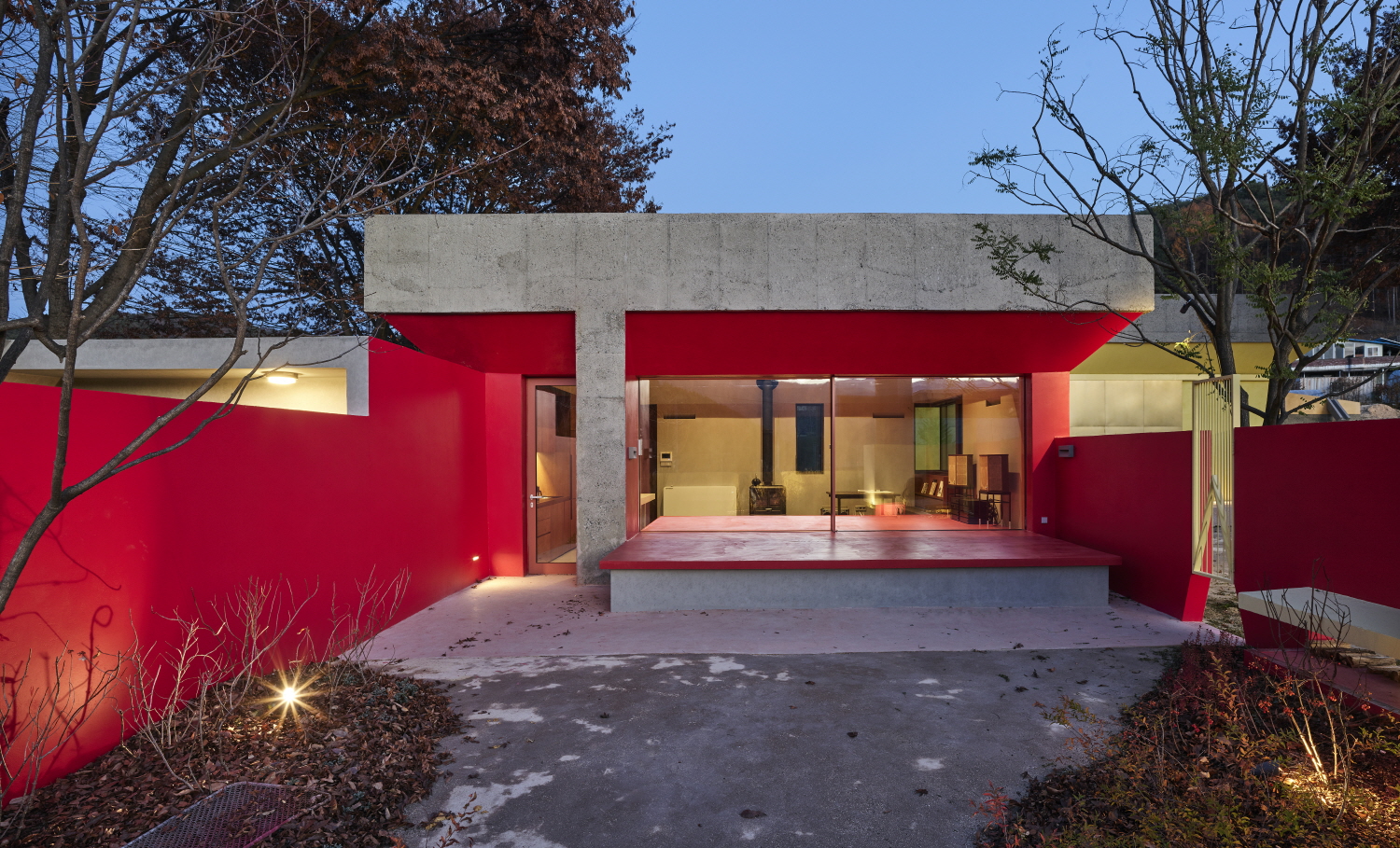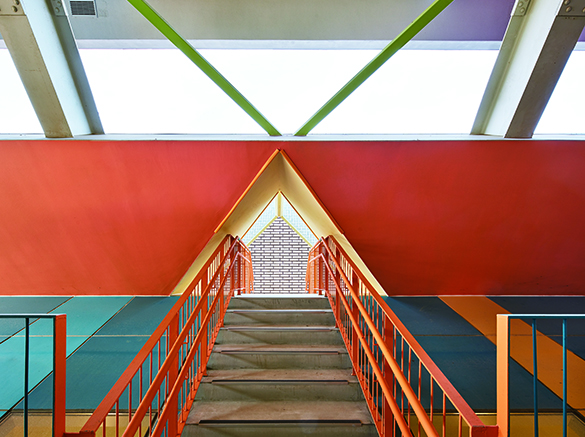SPACE January 2025 (No. 686)
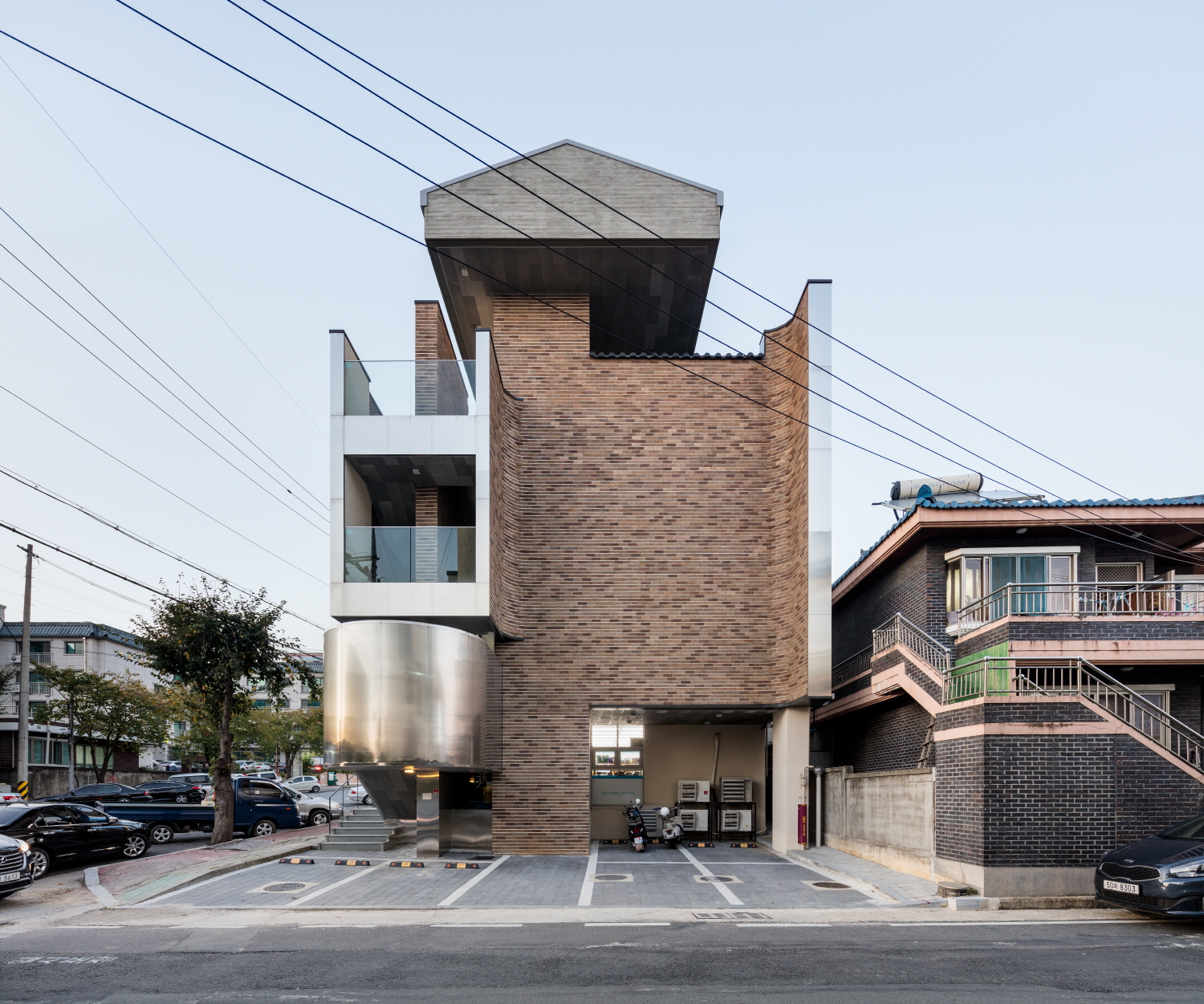
©Kyungsub Shin
Kim Kwangsoo principal, studio_K_works × Lee Jongkeun author
Implosion and Inclusive Transcendence
Lee Jongkeun(Lee): Let’s talk about the architectural situation we are facing, based on the whole projects of Kim Kwangsoo. One of the oppressive forces I feel in the world here is harmony. Because in our time, which we must live in a multicultural way, what is important is not harmony but coexistence. A true sense of dialogue is also only possible when each person exists as an individual. The problem is that the concept of each person staying in his or her own place corresponds to individualism. The individual, as the self-managing subject of neoliberalism, has to take all the responsibility. In other words, the internality of individuals in neoliberalism are closed off from each other. This internality would be architecturally equivalent to exterior and interior space. How should architects look at this issue of internality?
Kim Kwangsoo(Kim): I have also often thought about whether I should live like an exile in the prison of internality of this modern world. However, in art, we can see that no matter how internalised the world is, it has the power to open up to the outside. That is what fascinates us. I thought that architecture also had this power, and I decided that it would be more appropriate to accept the closed reality and then delve into the inside, rather than try to draw something from the outside and seek help. If we try to conform and resemble the outside in 064 the name of harmony or synthesis, the pressure generated from the outside will take over the inside. I thought I could somehow reveal the unknown world and its externality by delving into the interior. Such an architecture would be, as the novelist Lee Insung said, an ‘implosion (內破)’, an implosive architecture that bursts from the inside, not an explosive one that bursts from the outside.
Lee: In terms of internality and externality, the most relevant example in architecture is the Neue Nationalgalerie (1968) by Mies van der Rohe. What modernist architecture was aiming for was transparency, which in this case meant covering the entirety with glass and opening it up to the surroundings, and this was made possible by the power of technology. The essence of modernist space is infinite freedom, which is an existence protected in openness. You could say it is the elimination of internality. The labyrinthine space disappeared, and there was no dialogue and dialectic between exterior and interior. If implosion is the way to break through this dilemma, how does implosion create an exterior, in other words, an unknown sense?
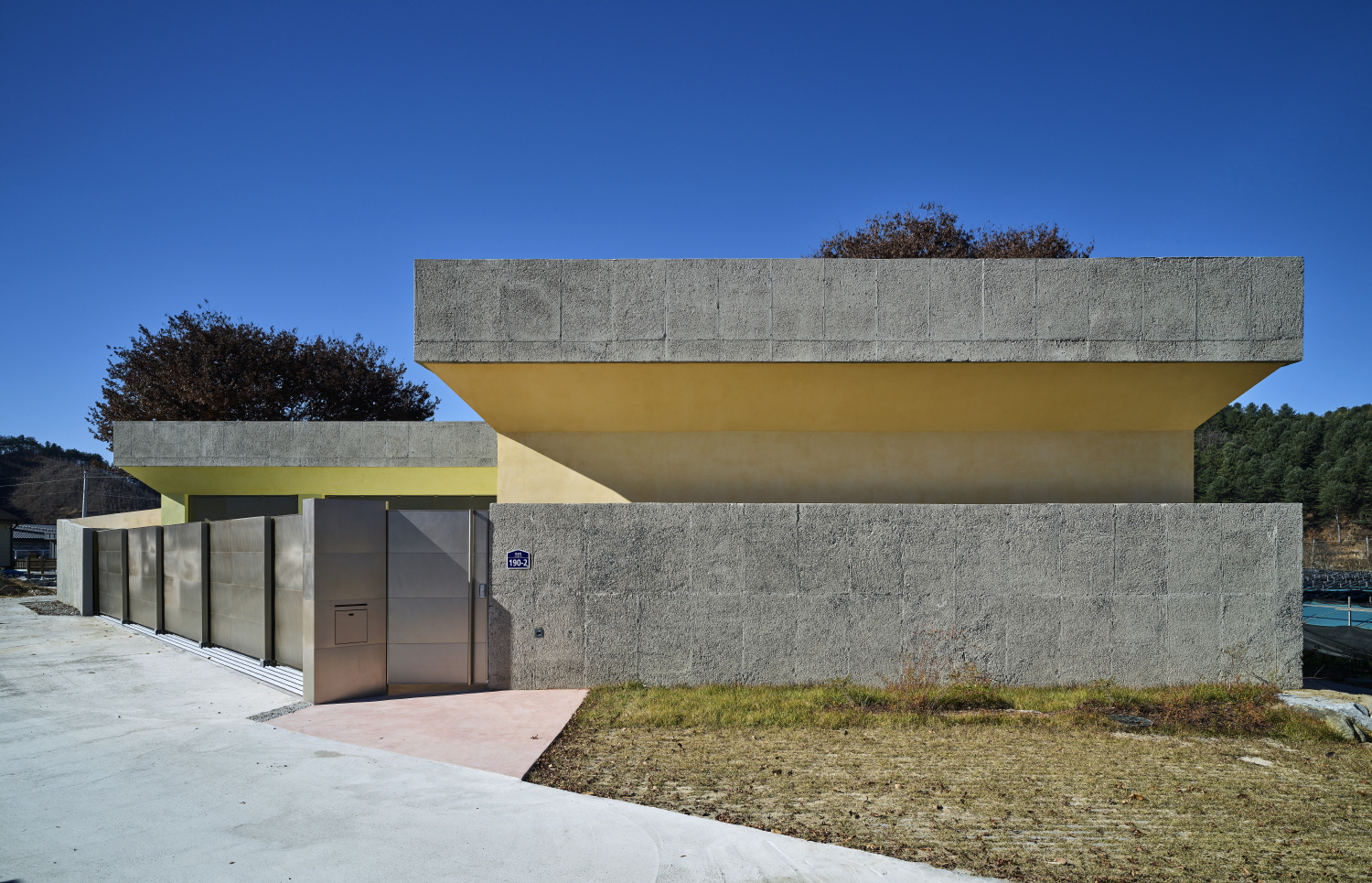
Ogoeheon (Music Artist Residency) (2024)
Kim: It is very difficult to realise that concept in architecture. There is a growing interest in a state where reality and fantasy are indistinguishable, as we felt in Ogoeheon, where the colours seemed to float. The Middle Ages was a really closed society, centred on Catholicism, and I believe the concept of infinity in the modern era has opened up this finite situation. Take the example of Spain, a country of coexistence and inclusion. When Islam was present, it accepted not only Catholicism but also other cultures, such as Jewish culture, and got on well with them. After the Reconquista, however, there was the Inquisition for more than 400 years, and they tried to internalise everything into Catholicism. It was during this period that the first modern novel, The Ingenious Gentleman Don Quixote of La Mancha (1605) by Miguel de Cervantes, was published. When you read the novel, you cannot tell whether it is reality, a joke, or fantasy. Perhaps this was the attitude that Cervantes had no choice but to adopt. Because, if he had written it openly, he would have been censored and punished. I don’t know whether El Greco’s paintings are a prank or a joke, but they are both tragic and comical. In William Shakespeare’s The Tragedy of Hamlet, Prince of Denmark (1601), written around the same time, the appearance of a ghost blurs the boundary between reality and fantasy, and Hamlet adopts a madman’s attitude in order to get closer to the truth. In this context, I am very interested in the Mannerist period, when a single view of the world collapses. In this context, I think there is not much significance in discussing about whether the modern era has ended and the postmodern era will come next. The reason why philosopher Kim Jinsok uses the term ‘inclusive transcendence (匍越)’ is also that we are struggling, but instead of jumping over the modern era, we have no choice but to include the difficulties and overcome them and move forward, and this method is a better choice to open up the current closed world.
Lee: How can we move forward from the modern era and at the same time include it?
Kim: We can perform crawling while transforming and overcoming the modern era, keeping a tilted balance, and moving forward.
Lee: The contemporary world is becoming increasingly dematerialised, cyberised, virtualised, abstracted, and digitalised. Substantiality is gradually disappearing. In the past, architecture used to have a sense of the material that made up the architecture, such as the thickness of columns and walls, but now it has disappeared like a sheet of paper. We are in a state where even architecture is losing its substantiality. It’s impossible to have a soul without a body, so shouldn’t architecture preserve qualities like weight, mass, agglomeration, and physicality that architecture should carry?
Kim: In fact, recently, we can see attempts to maximise the materiality as a reaction to non-substantiality, or to express a primitive sense in terms of the megalithic culture of dolmens or wilderness. Such a method also attempts to bring out the real sense that architecture can provide, but I am quite sceptical about this phenomenon as well.
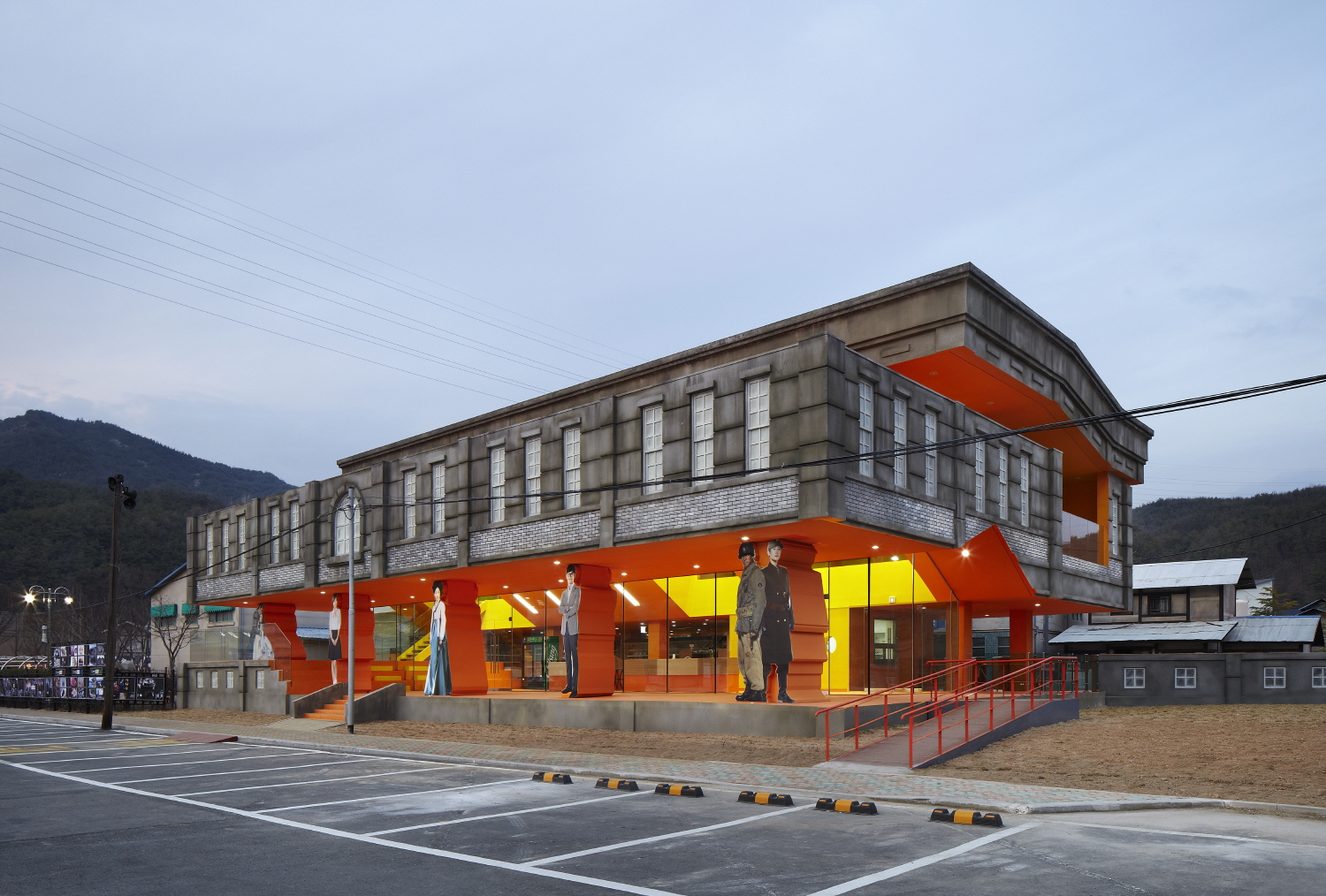
Hapcheon Cinema Park (2014)
Humour and Hidden Side of Modernist Architecture
Lee: As Arthur Rimbaud said that ‘it must be absolutely modern,’ isn’t it rather worse to try to soothe the contemporary era with regression and nostalgia? At this point, what we should point out is that architecture is fundamentally a project, and projects move forward. This implies that architects must dream of something. Like imagination and the belief that ‘the city I imagine will be better than the city we live in now.’ Without this, it would be difficult to validate the profession of architect. In other words, architecture must be utopian under all circumstances. According to Zygmunt Bauman, utopian hope, instinct, and desire are essential characteristics that make human beings human. But in the world of closed individuals of today’s neoliberalism, what kind of utopia can architects imagine? Or what kind of utopia should they imagine?
(...)
